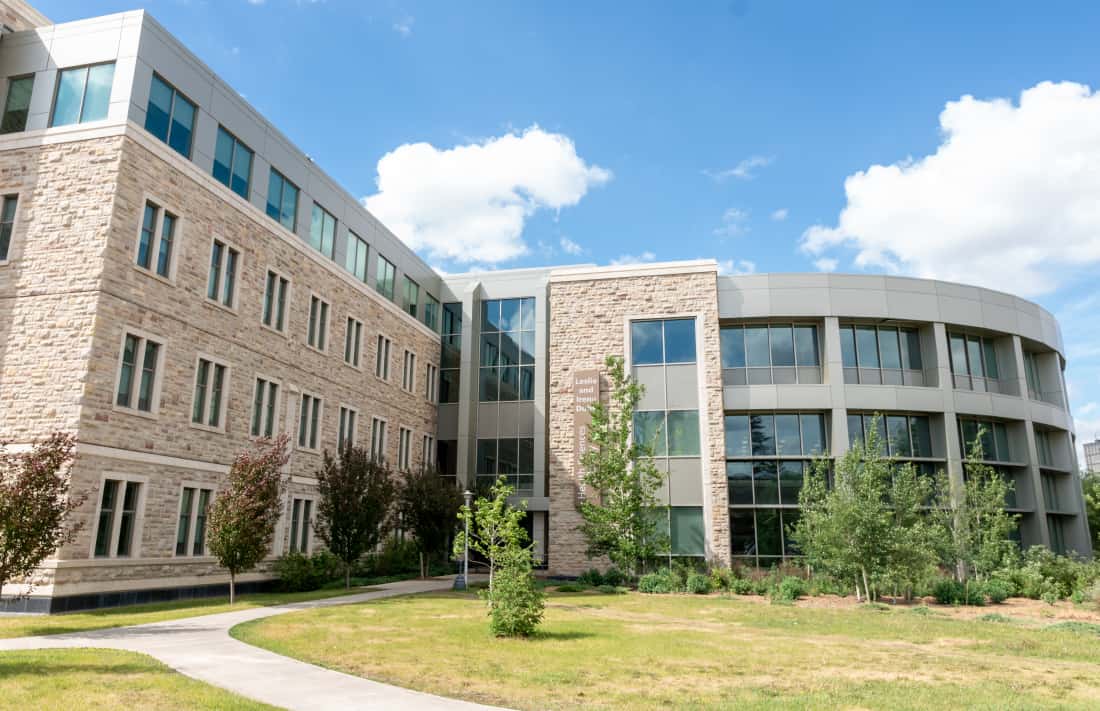
Students of the University of Saskatchewan College of Medicine tend to be from higher-income households than the provincial medium. This is a trend in medical programs across Canada that the U of S is addressing by reserving six seats per year for low-income students.
In fall 2018, the college launched the Diversity and Social Accountability Admissions Program, setting aside six seats out of a 100 for low-income students. Applicants who provide proof of a household income below $80,000 in the five years prior to their application are considered first for the 79 general Saskatchewan seats and if unsuccessful, for the six less competitive DSAAP seats.
The program was modeled after the reportedly successful Aboriginal Admissions Program, which reserves 10 seats for Indigenous students every year. Though newer, DSAAP appears to also be doing well; all six seats were filled in 2018 and are predicted to be filled again this year.
Barry Ziola, director of admissions for the College of Medicine, says the program is meeting a need for representation within the college.
“We need to get broader representation of applicants from the full population spectrum. We can’t have only rich kids getting into medicine,” Ziola said. “The university [is] a public entity in the province and not an ivory tower.”
For the 2019 admissions cycle, DSAAP remains the same aside from minor changes to the wording of the application. Thinking about the future of the program, Ziola says the college is waiting to gather data on the students admitted through the program before making significant changes.
“Right now, out of every class of 100, about 25 per cent of seats are being filled by students who come from the lower half of income in Saskatchewan,” Ziola said. “There is room to get more seats on that side, but we need a couple of years of data to see if these applicants are being successful and so on, then maybe we can move to 10 [DSAAP] seats.”
The college is also interested in what type of impact DSAAP has on the community once students admitted through the program reach graduation.
“We find that a lot of our Aboriginal students latch onto family medicine and that’s a good thing because they’re going back to their communities in some cases,” Ziola said. “It will be interesting, when we start graduating our DSAAP students, to see where they go.”
Ziola points to local industry and alumni as possible sources of financial support for DSAAP. He says he would like a “much more aggressive alumni support” for the College of Medicine.
Adding a financial aid component to the program has been on the table since DSAAP’s inception but it is still to be implemented. Ziola says the college’s budget deficit of around $3 million makes it difficult.
“I have said for a long time that 25 per cent of students in every incoming class needs financial support. As a starting target, [they] should be given a half-tuition scholarship every year in medical school but that’s big coin,” Ziola said. “Right now the college is not in a financial position to do anything though they have started discussions. It’s on the radar of the college.”
Overall, Ziola says the program has been well received and the local community seems to support social accountability initiatives.
“We haven’t had any blowback from the majority of professionals whose kids tend to make the majority of applicants to medicine,” Ziola said. “Supporting disadvantaged applicants in the United States context has been controversial, but I do have to say that Saskatchewan seems to be very supportive of this type of approach.”
—
Ana Cristina Camacho / News Editor
Photo: Heywood Yu